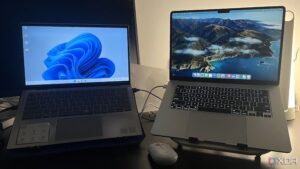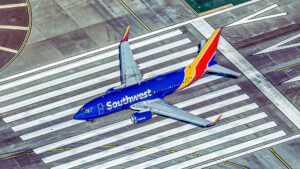
UPDATE: A recent user experience highlights the ongoing debate between Windows and macOS, revealing why many tech enthusiasts remain loyal to Windows even after trying Apple’s MacBook.
Just weeks into using a MacBook, the user, who had previously relied on Windows for over 15 years, confirmed that adapting to Apple’s operating system was challenging and ultimately led to a preference for Windows. The user emphasized that despite the sleek performance of the MacBook, key factors such as software compatibility and hardware flexibility still favor Windows, especially for everyday tasks.
The user pointed out a significant drawback: their favorite screenshot tool, ShareX, is unavailable on macOS. While macOS offers basic tools for screenshots, the lack of advanced features limits productivity, a sentiment echoed by many professionals.
Windows also boasts superior compatibility with older software, thanks to its Compatibility Mode, allowing users to run legacy applications. In contrast, macOS struggles with older software, which could hinder workflows for users requiring specific programs.
Hardware compatibility presents another challenge for Mac users. Windows PCs can connect with a vast array of affordable devices, including gaming peripherals, often starting as low as $10. This contrasts sharply with the expensive ecosystem surrounding Apple products, which can deter budget-conscious consumers.
Additionally, the user highlighted the ease of upgrading and repairing Windows laptops. For example, they successfully upgraded a 12-year-old laptop from an HDD to an SSD, significantly enhancing its performance. The flexibility to replace components stands in stark contrast to the soldered parts in MacBooks, which restrict user modifications and repairs.
Customization is another area where Windows excels. The user noted that Windows allows extensive adjustments to the interface, including the taskbar and cursor, often using built-in tools or third-party applications. Conversely, macOS limits these options, which can be frustrating for users seeking a personalized experience. The absence of an equivalent to Microsoft’s PowerToys further emphasizes this limitation.
In terms of performance, the MacBook Air outperforms entry-level Windows laptops in boot time and application responsiveness. The user reported no overheating issues on their MacBook, while their Dell laptop often requires a cooling pad. However, they noted that high-end Windows models can match or exceed MacBook performance, especially in resource-heavy tasks.
After six months of using both operating systems, the user concluded that Windows remains the preferred choice for everyday use, citing convenience as a major factor. They acknowledged that while MacBooks excel in certain areas, the overall experience reinforced why Windows remains the dominant choice globally.
Looking ahead, the user expressed that their next purchase will likely be another Windows laptop unless Apple introduces touchscreen functionality to its MacBook lineup. They emphasized the practicality of 2-in-1 laptops for daily tasks, which allow for more flexible usage without relying solely on a mouse and keyboard.
As the debate between these two giants continues, this user’s experience serves as a reminder of the diverse needs and preferences among technology users today. With each operating system offering unique advantages, the competition remains fierce, driving innovation and improvements in both Windows and macOS.





